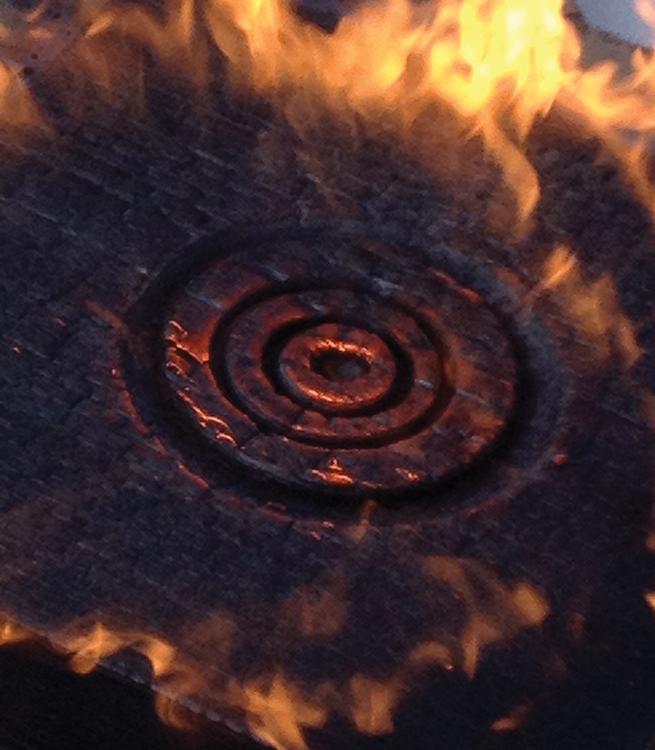But along with his creative partner, artist Alayne Spafford, that’s exactly what he’s doing. They create art with a technique called Shou-Sugi-Ban (burnt cedar), an 800-year-old traditional Japanese technique that’s used to protect walls from rot and fire.
Pruden also does renovations, including the remodeling he did of Spafford’s bathroom, which earned him the grand prize in Canadian House & Home magazine’s 2009 renovation competition. But it was the renovation of his own washroom that resulted in the duo’s first experimentation with Shou-Sugi-Ban. Pruden crafted a piece to decorate the room using the technique, but found that it was too charred and monochromatic looking. The solution? Leta professional abstract artist paint it.
Inspired by the unique alligator skin-like texture of burnt cedar, Spafford gave the piece her take on colour and design, creating what was unofficially the first piece created by Burn Design Collective – the duo’s present day moniker. While that first piece sparked the flame of collaboration, it was three years before the team officially began creating its unique work – an eclectic mix of charred, scorched and painted wooden canvases. The duo’s work premiered ina show at Coup {Garment Boutique} in June.
The pair air-dry pieces of hand-selected western red cedar by stacking them in a temperature-controlled space until the boards have a moisture content of no more than 12 per cent. Pruden then rips and fits the pieces together, binding them into various sizes. Spafford and Pruden conceptualize their work and then they get to the fun part: Charring the wood. They use “Big Joe,” a propane tanker torch to give the wood the alligator-skin appearance while their high-temperature map gas torch and smaller benzene torch provide more subtle effects.
Once the wood is charred, waxed and drilled to serve the creative vision behind the pieces, Spafford’s burning need for paint and colour are added. The result? A mix of colourful, charred and polished canvassed art. “It’s something that’s hard to fit into a category,” says Spafford. “It’s art. It’s design. It’s woodworking. It’s a lot of elements.”
